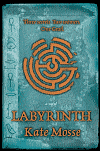
Dan Brown’s 2003 The Da Vinci Code and the resurrected 2005 Demons and Angels have once again piqued our interest in the mythic covert machinations of the Roman Catholic Church from antiquity to the present day. The Holy Grail has been the subject of adventure literature since first being introduced by Chrétien de Troyes in his 12th Century verse, Perceval, le Conte du Graal (The Story of the Grail) and a bit later by Robert de Boron in his Joseph d'Arimathie. Romance was added to the story by Wolfram von Eschenbach’s Parzival in the early 13th Century.
In modern climes Brown is certainly not the first to make the ancient sexy. That may be given to Umberto Ecco and his very fine Name of the Rose and Foucault’s Pendulum. Ecco, however, was a bit dense to read and required a lot of the reader. Brown, on the other hand, offered a well-digested story with a simple plot that even the 21st Century ADD sensibilities could comprehend. With Brown’s publication came a deluge of books dealing with the story of the Grail and antiquities in general. While good reads, books like Steve Berry’s the Templar Legacy, Raymond Khoury’s the Last Templar, and Javier Sierra’s The Secret Supper pay precious little service to character development in their frantic effort to provide a page turner for the modern attention-deprived reader.
Gratefully, author Kate Mosse, with a craftsman’s care, spins two tales of intrigue separated by 800 years. Clinging to the tale of the 21st Century Dr. Alice Tanner and her 12th Century counterpart Alais du Mas (Pelletier) is the history and geography of modern-day Southwest France, the Languedoc, stronghold of the Cathar heresy, object of the Albigensian Crusade (1209 – 1229). Central to the Cathar movement was Carcassonne, home to the historic figure Raymond-Roger Trencavel, both characters in the novel. Also presented is a brief history and theology of Catharism as an enduring alternative to Roman thought.
Essential to the understanding of the literary structure of The Labyrinth are the two tenants of Cathar theology. The bons chrétiens, “Good Christians” of the Cathar Faith believed that within man is an element of the Divine. This element of divinity was held captive by corruption — the negative energy associated with the material world. The second tenant is the belief in reincarnation. The Cathars believed that once man became aware (through gnosis) of the negative material nature of existential reality, the way to spiritual liberation would be the turning away from such materialism (a very Eastern thought). The path is a stepwise process, individual to each human. Those believers unable to claim spiritual liberation during their contemporary lifetime would return in a later lifetime to continue the struggle.
Moss deftly employees these religious beliefs to build two parallel stories, almost a millennium apart, where the protagonists and antagonists of one period has an equivalent counterpart in the other period, a perpetuation of the story. Hung on this scaffolding is an intricate story that reveals a Grail myth not previously found in fiction. But that is a plot spoiler. The Labyrinth is a Grail story superior to all modern version published previously. Kate Mosse is a master builder of the story.
This review was first published in Blogcrits.org
© Copyright, C. Michael Bailey, 2006
